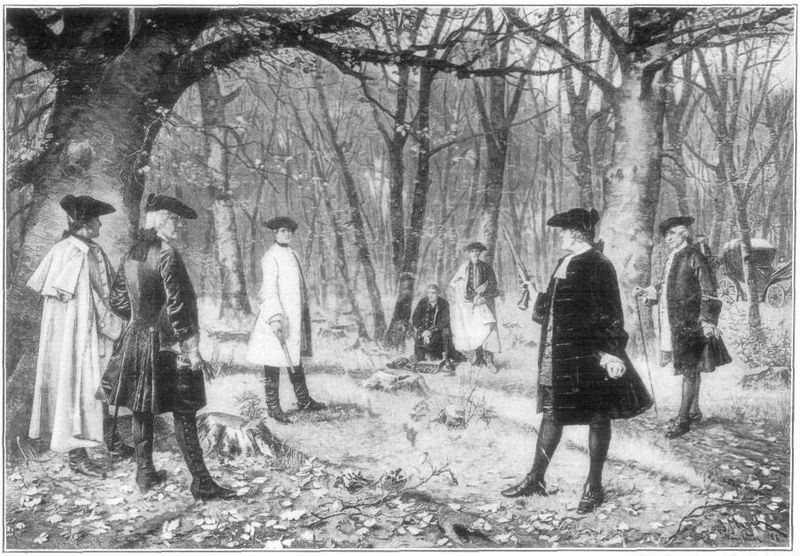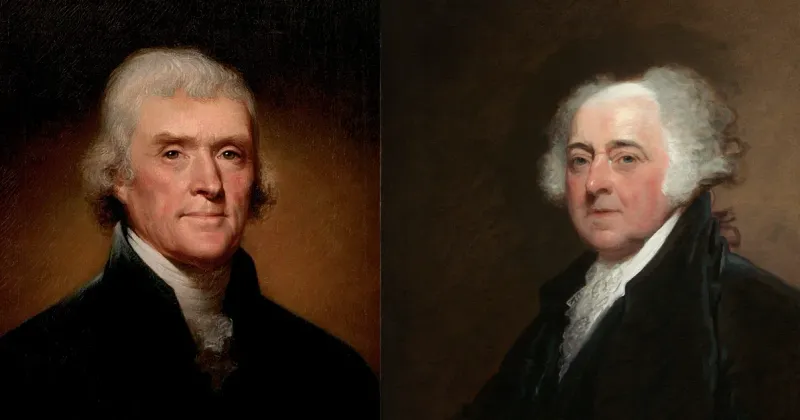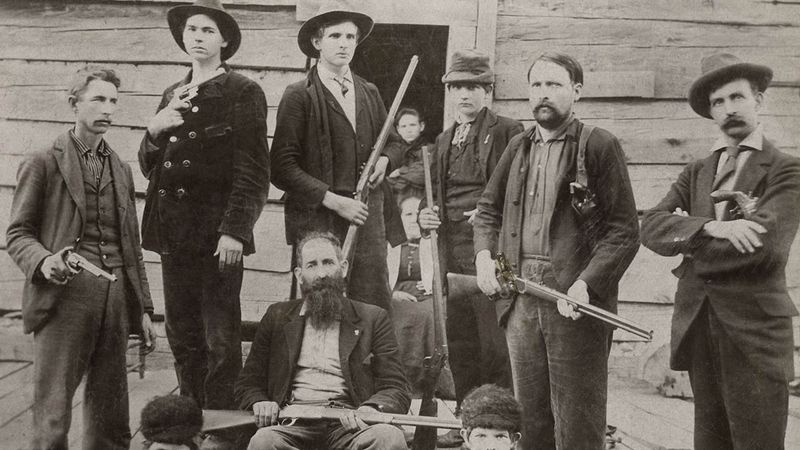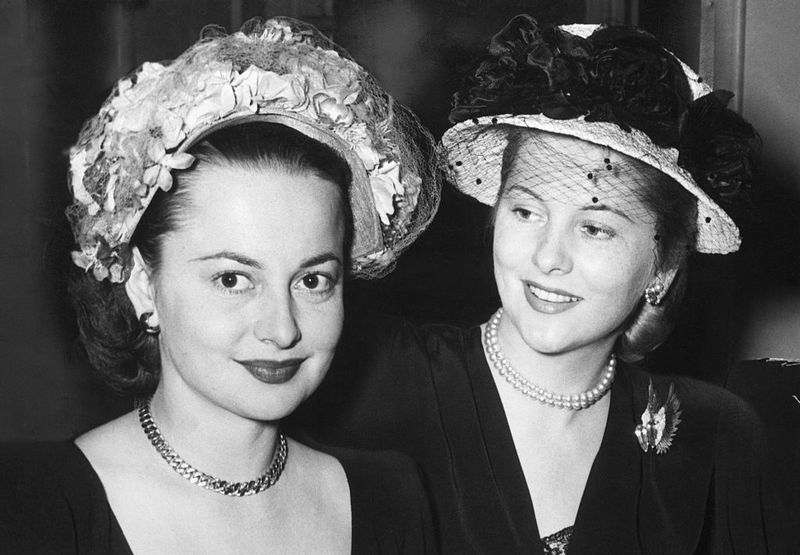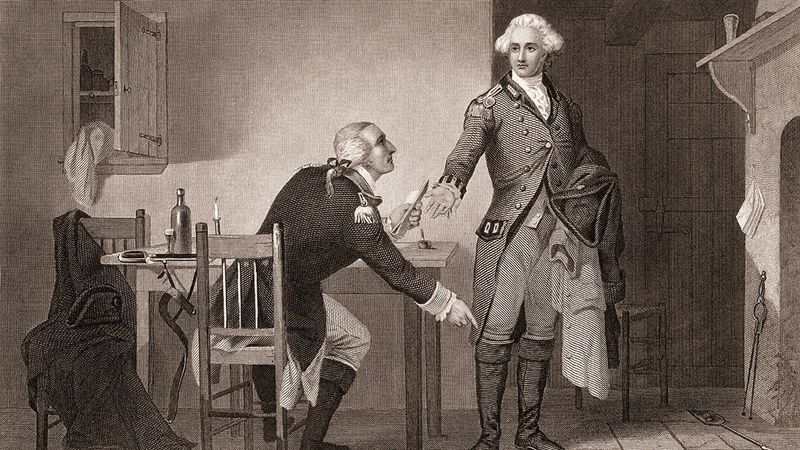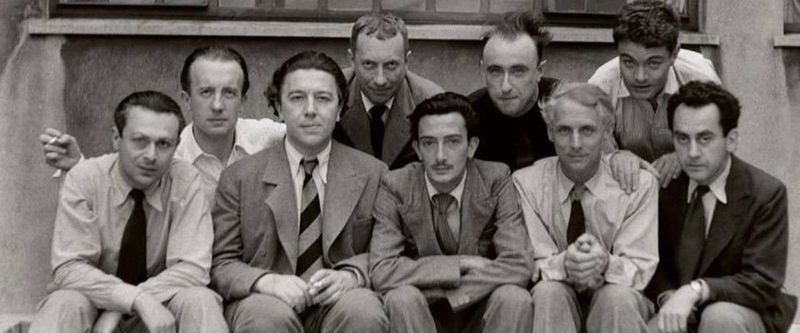History’s pages are filled with intense rivalries that changed the world. These feuds weren’t just disagreements – they shaped politics, science, and culture for generations. From deadly duels to family conflicts spanning decades, these bitter rivalries reveal how personal animosity can alter history’s course in unexpected ways.
1. Hamilton vs. Burr: A Deadly Political Rivalry
Blood stained the New Jersey shore that fateful July morning in 1804. Alexander Hamilton, brilliant founding father and architect of America’s financial system, faced Vice President Aaron Burr in a duel born from years of political sabotage and personal insults.
Their animosity had simmered for years through bitter newspaper attacks and political maneuvering. Hamilton had repeatedly thwarted Burr’s ambitions, including the 1800 presidential election.
When Hamilton allegedly insulted Burr at a dinner party, it was the final straw. Pistols raised at Weehawken, Burr fired the shot that killed Hamilton – forever altering both men’s legacies.
2. Jefferson vs. Adams: From Friends to Foes and Back Again
Revolutionary comrades turned bitter rivals, Thomas Jefferson and John Adams embodied America’s first great political divide. These founding fathers initially bonded during the fight for independence, but their visions for the new nation couldn’t have been more different.
Adams favored a strong federal government and British-style institutions. Jefferson championed states’ rights and feared centralized power would threaten liberty.
Their presidential campaigns grew nasty, with Jefferson hiring a hatchet-man journalist to attack Adams. After years of silence following Jefferson’s victory, they remarkably reconciled through letters in their final years, dying hours apart on July 4, 1826.
3. Tesla vs. Edison: The War of Currents
Sparks literally flew in the battle between electrical wizards Nikola Tesla and Thomas Edison. Their feud centered on competing electrical systems – Tesla’s alternating current (AC) versus Edison’s direct current (DC) – with billions in potential profits at stake.
Edison, the established inventor, launched a shocking propaganda campaign. He publicly electrocuted animals with AC to prove it was dangerous, while Tesla dramatically illuminated Chicago’s 1893 World’s Fair with his system.
Edison’s ruthless business tactics contrasted with Tesla’s scientific idealism. Though Tesla’s AC ultimately won the technological battle, Edison’s superior marketing skills helped him claim greater fame and fortune.
4. Bette Davis vs. Joan Crawford: Hollywood’s Greatest Hatred
Studio lights couldn’t outshine the white-hot hatred between these silver screen legends. Bette Davis and Joan Crawford’s legendary feud began in the 1930s over a man (actor Franchot Tone) and escalated into decades of professional sabotage and venomous insults.
On the set of their only film together, “Whatever Happened to Baby Jane?” (1962), Crawford allegedly wore weights under her costume for scenes where Davis had to drag her across the floor. Davis retaliated with actual kicks during filming.
When Crawford died in 1977, Davis reportedly quipped, “You should never say bad things about the dead, only good… Joan Crawford is dead. Good!”
5. Hatfields vs. McCoys: America’s Bloodiest Family Feud
The names Hatfield and McCoy became synonymous with vengeance along the Kentucky-West Virginia border. What began as a dispute over a stolen pig in 1878 erupted into a savage blood feud spanning generations and claiming at least a dozen lives.
Devil Anse Hatfield led his clan against Randolph McCoy’s family through ambushes, arson, and murder. The violence peaked on New Year’s Day 1888 when Hatfields burned the McCoy cabin, killing two children.
State militias were eventually mobilized to restore order. The families formally ended their hostilities in 2003, signing a symbolic truce 125 years after their ancestors drew first blood.
6. Van Gogh vs. Gauguin: When Artistic Differences Drew Blood
The infamous ear incident marked the violent end of a turbulent artistic partnership. Vincent van Gogh and Paul Gauguin’s brief cohabitation in the Yellow House in Arles, France, in 1888 began with creative excitement but descended into chaos.
Their artistic philosophies clashed fundamentally. Van Gogh painted what he observed with emotional intensity, while Gauguin preferred memory and imagination. Their arguments grew increasingly heated over nine weeks of shared living.
Following a particularly explosive confrontation on December 23, van Gogh suffered a psychotic episode, sliced off part of his ear, and delivered it to a local brothel. Gauguin fled, and they never saw each other again.
7. Trotsky vs. Stalin: Revolutionary Comrades Turned Mortal Enemies
From the ashes of revolution rose one of history’s deadliest personal vendettas. Leon Trotsky and Joseph Stalin, once fellow Bolshevik revolutionaries, became locked in a power struggle after Vladimir Lenin’s death in 1924 that would end with an ice pick.
Trotsky, brilliant and arrogant, was the Red Army’s creator and Lenin’s presumed successor. Stalin, calculating and ruthless, outmaneuvered him through party machinery control. By 1929, Stalin had consolidated power and forced Trotsky into exile.
Stalin’s obsession with eliminating his rival continued for years, culminating in 1940 when his agent assassinated Trotsky in Mexico with an ice axe to the skull.
8. The Bone Wars: Paleontology’s Fiercest Rivalry
Dinosaur bones became weapons in the vicious scientific feud between paleontologists Othniel Charles Marsh and Edward Drinker Cope. Beginning in the 1870s, their competition to discover new species devolved into sabotage, theft, and bribery across the American West.
Workers were paid to destroy fossils rather than let rivals claim them. Spies infiltrated dig sites. Both men rushed incomplete findings to publication, making numerous errors in their haste to claim priority.
Their personal fortunes were depleted in this decades-long battle. While their methods were questionable, their combined discoveries revolutionized paleontology – together identifying over 130 new dinosaur species including Triceratops, Stegosaurus, and Diplodocus.
9. Chanel vs. Schiaparelli: Fashion’s Fiercest Faceoff
The runway wasn’t big enough for both Coco Chanel and Elsa Schiaparelli in 1930s Paris. These pioneering designers represented opposing fashion philosophies – Chanel’s elegant simplicity versus Schiaparelli’s surrealist extravagance.
Their personal animosity peaked at a costume ball when Chanel “accidentally” guided Schiaparelli backward into a candelabra, setting her elaborate tree costume ablaze. Chanel dismissed her rival as “that Italian artist who makes clothes,” while Schiaparelli called Chanel “that milliner.”
World War II forced Schiaparelli’s exile from Paris, giving Chanel the upper hand. Though Schiaparelli collaborated with Salvador Dalí and invented shocking pink, Chanel’s minimalist vision ultimately defined modern fashion.
10. Mark Antony vs. Cicero: Words Sharper Than Swords
Ancient Rome’s greatest orator met a grisly end at the hands of his political enemy. Marcus Tullius Cicero used his unmatched rhetorical skills to denounce Mark Antony in a series of devastating speeches called the Philippics, comparing him to a drunken, gambling degenerate.
Antony, Julius Caesar’s right-hand man, seethed as Cicero’s words turned public opinion against him. When Antony joined Octavian and Lepidus in the Second Triumvirate in 43 BCE, Cicero’s name topped his execution list.
Soldiers caught the fleeing Cicero and beheaded him. Antony had Cicero’s hands and head displayed in the Roman Forum – the hands that wrote the speeches that condemned him.
11. De Havilland vs. Fontaine: Sisters and Rivals
Hollywood’s most famous sibling rivalry played out on cinema’s grandest stage. Sisters Olivia de Havilland and Joan Fontaine transformed childhood competition into adult animosity that spanned decades, with the Academy Awards as their battlefield.
Their mutual Oscar nominations in 1942 made history – Fontaine won, reportedly rejecting her sister’s congratulations. When de Havilland won her own Oscar five years later, she returned the snub.
Their feud intensified over men, movie roles, and their mother’s favoritism. They stopped speaking entirely in 1975 after their mother’s funeral arrangements sparked new resentment. Even death didn’t reconcile them – when Fontaine died in 2013, de Havilland issued no public statement.
12. Adidas vs. Puma: The Brothers Who Divided a Town
The global sneaker wars began as a family feud in one small German town. Brothers Adolf “Adi” and Rudolf “Rudi” Dassler started a successful shoe company together in Herzogenaurach in the 1920s, creating innovative athletic footwear.
Their partnership shattered during WWII amid mutual accusations of betrayal. Some say Rudolf believed Adi had arranged his wartime conscription; others blame their wives’ dislike for each other.
The brothers split in 1948, creating rival companies on opposite sides of the Aurach River – Adidas (Adi Dassler) and Puma (Rudolf Dassler). Their hometown became literally divided, with businesses, schools and marriages aligned with either company. The brothers never reconciled before their deaths.
13. Vidal vs. Mailer: Literary Giants at War
The feud between these literary titans erupted violently on live television in 1971. Gore Vidal and Norman Mailer, two of America’s most celebrated writers, despised each other with an intellectual venom that occasionally turned physical.
Their animosity ignited when Vidal compared Mailer’s novel to “engaging in sex with a conceptual void.” During a heated appearance on The Dick Cavett Show, an intoxicated Mailer headbutted Vidal backstage, then threatened him on air.
Vidal delivered the ultimate verbal knockout: “Once again, words fail Norman Mailer.” Their literary rivalry continued through scathing reviews and public insults until Mailer’s death in 2007, when Vidal coldly remarked, “I thought he was dead already.”
14. Benedict Arnold vs. George Washington: America’s Greatest Betrayal
Before his name became synonymous with treason, Benedict Arnold was George Washington’s most trusted general. A brilliant military tactician, Arnold secured crucial American victories at Fort Ticonderoga and Saratoga during the Revolutionary War.
Their relationship fractured when Arnold felt Congress and Washington overlooked his contributions while promoting less deserving officers. Embittered by perceived slights and financial troubles, Arnold secretly negotiated with the British to surrender the critical fortress at West Point.
Washington was devastated upon discovering the betrayal in 1780. He reportedly asked, “Whom can we trust now?” Arnold fled to England where he lived in exile, while Washington hung the traitor’s effigy with one boot – commemorating both Arnold’s battlefield injury and treachery.
15. Dalí vs. Breton: Surrealism’s Civil War
Salvador Dalí’s melting clocks eventually melted his friendship with Surrealism’s founder. André Breton initially championed the flamboyant Spanish artist, seeing his dreamlike paintings as perfect expressions of Surrealism’s goal to liberate the unconscious mind.
Their relationship soured as Dalí embraced commercial success and right-wing politics. Breton, a committed leftist, grew disgusted by Dalí’s fascination with Hitler and his willingness to create art for wealthy clients.
In 1934, Breton formally expelled Dalí from the Surrealist movement, anagramming his name into “Avida Dollars” (eager for dollars). Dalí responded characteristically: “The only difference between me and the Surrealists is that I am a Surrealist.”
16. Churchill vs. De Gaulle: Allied Leaders at Odds
The fight against Hitler couldn’t unite these strong-willed statesmen. Winston Churchill and Charles de Gaulle maintained a stormy alliance throughout World War II, their clashes fueled by competing national interests and massive egos.
Churchill recognized de Gaulle as France’s legitimate leader in exile, but frequently found him obstinate and ungrateful. “The heaviest cross I have to bear is the Cross of Lorraine,” Churchill complained, referencing de Gaulle’s Free French symbol.
De Gaulle resented British influence over liberated France and Churchill’s coziness with Roosevelt. Despite their tensions, each maintained grudging respect for the other’s patriotism and determination, with Churchill later writing that de Gaulle “looked like a king who had been overlooked.”
17. Jobs vs. Gates: Tech Titans’ Three-Decade Rivalry
The personal computing revolution was shaped by the complicated relationship between these visionary entrepreneurs. Steve Jobs and Bill Gates began as collaborators in the 1970s before becoming fierce competitors who transformed how we interact with technology.
Their fundamental differences fueled their rivalry. Jobs was a perfectionist who controlled both hardware and software; Gates focused on widespread software adoption regardless of the hardware. Their competition peaked when Microsoft invested in Apple in 1997, saving the struggling company.
Despite their differences, they maintained mutual respect. Before Jobs’ death in 2011, Gates visited his ailing rival, where they discussed their families and legacies in a conversation Jobs called “surprisingly tender.”

